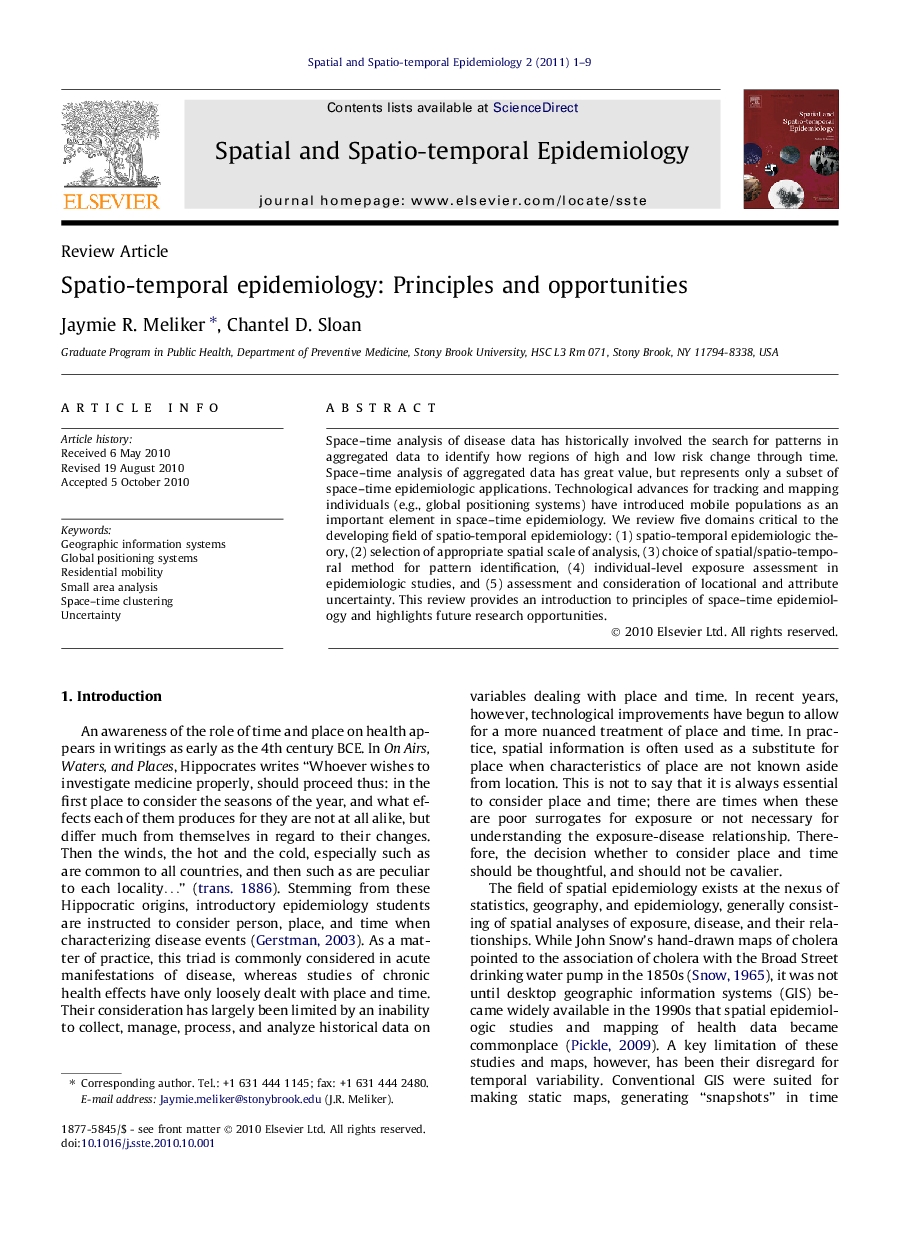| Article ID | Journal | Published Year | Pages | File Type |
|---|---|---|---|---|
| 1064398 | Spatial and Spatio-temporal Epidemiology | 2011 | 9 Pages |
Space–time analysis of disease data has historically involved the search for patterns in aggregated data to identify how regions of high and low risk change through time. Space–time analysis of aggregated data has great value, but represents only a subset of space–time epidemiologic applications. Technological advances for tracking and mapping individuals (e.g., global positioning systems) have introduced mobile populations as an important element in space–time epidemiology. We review five domains critical to the developing field of spatio-temporal epidemiology: (1) spatio-temporal epidemiologic theory, (2) selection of appropriate spatial scale of analysis, (3) choice of spatial/spatio-temporal method for pattern identification, (4) individual-level exposure assessment in epidemiologic studies, and (5) assessment and consideration of locational and attribute uncertainty. This review provides an introduction to principles of space–time epidemiology and highlights future research opportunities.
